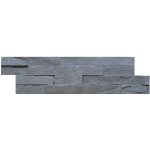Introduction
Urban cultured stone has become a popular choice in modern architecture and interior design, offering a versatile and cost-effective alternative to traditional stone materials. With its ability to mimic the look and feel of natural stone while providing greater flexibility in design and installation, cultured stone has transformed the way we think about building materials. In this article, we will explore the beauty, benefits, and applications of urban cultured stone in various architectural settings.
History of Cultured Stone
Cultured stone, also known as manufactured stone or faux stone, has a rich history that dates back to ancient civilizations. The Egyptians, Greeks, and Romans were among the first to use artificial stone in their architectural projects, creating stunning structures that showcased the versatility and durability of this material. However, it wasn't until the 20th century that modern techniques for producing cultured stone were developed, paving the way for its widespread use in contemporary construction.
The process of manufacturing cultured stone involves mixing cement, aggregates, and pigments to create a moldable material that can be cast into various shapes and sizes. Once the desired shape is achieved, the stone is cured and finished to replicate the appearance of natural stone. This process allows for a wide range of colors, textures, and patterns to be produced, giving designers and architects the freedom to create unique and visually striking designs.
Beauty of Urban Cultured Stone
One of the most appealing aspects of urban cultured stone is its aesthetic appeal. With its ability to closely resemble natural stone, cultured stone adds a sense of warmth and authenticity to any space. Whether used as a façade for a building, a feature wall in a living room, or a decorative element in a garden, cultured stone can enhance the visual appeal of a space and create a sense of luxury and sophistication.
Cultured stone comes in a variety of styles, including stacked stone, river rock, brick, and limestone, allowing for endless design possibilities. The texture and color variations in cultured stone give each piece a unique and organic look, making it difficult to distinguish from natural stone at first glance. This versatility makes cultured stone a popular choice for both residential and commercial projects, where designers seek to achieve a high-end aesthetic without the cost and maintenance associated with natural stone.
Benefits of Urban Cultured Stone
In addition to its beauty, urban cultured stone offers a range of practical benefits that make it an attractive choice for architects, builders, and homeowners alike. One of the primary advantages of cultured stone is its lightweight nature, which makes it easier to handle and install compared to natural stone. This lightweight quality also reduces the structural load on a building, making it a practical choice for projects where weight is a concern.
Cultured stone is also highly durable and weather-resistant, making it suitable for both interior and exterior applications. Unlike Ledge stone for luxury estates , which can be prone to cracking and chipping, cultured stone is engineered to withstand the elements and maintain its appearance over time. This durability makes cultured stone a low-maintenance option for homeowners and businesses looking to enhance the beauty of their property without the need for frequent repairs or replacements.

Another benefit of urban cultured stone is its cost-effectiveness. Cultured stone is typically more affordable than natural stone, making it a budget-friendly option for projects with limited funds. Additionally, the installation costs of cultured stone are lower than those of natural stone, as the lightweight nature of the material reduces labor and equipment expenses. This cost-effectiveness makes cultured stone an attractive choice for both large-scale developments and small-scale renovations, where budget constraints may be a concern.
Applications of Urban Cultured Stone
Urban cultured stone can be used in a wide range of architectural settings, from residential homes and commercial buildings to public spaces and landscaping projects. One of the most common applications of cultured stone is as a façade material for buildings, where it can be used to create a striking and visually appealing exterior. Cultured stone can be installed in a variety of patterns and configurations, allowing designers to achieve a customized look that complements the overall design of the building.
In interior design, cultured stone is often used to create feature walls, fireplace surrounds, and accent pieces that add texture and depth to a space. The natural look and feel of cultured stone can create a sense of warmth and coziness in a room, making it a popular choice for living rooms, bedrooms, and other areas where comfort is key. Cultured stone can also be used in bathrooms and kitchens to create a luxurious and sophisticated ambiance, adding a touch of elegance to these high-traffic areas.
Beyond buildings, urban cultured stone can be used in landscaping projects to create beautiful outdoor spaces that blend seamlessly with the natural environment. Cultured stone can be used to build retaining walls, pathways, and outdoor kitchens, adding a touch of elegance and sophistication to gardens and outdoor living areas. The durability and weather-resistance of cultured stone make it an ideal choice for outdoor applications, where it can withstand the elements and maintain its appearance for years to come.
Conclusion
Urban cultured stone offers a beautiful, durable, and cost-effective alternative to natural stone, making it a popular choice for architects, builders, and homeowners seeking to enhance the beauty of their properties. With its ability to mimic the look and feel of natural stone while providing greater design flexibility and ease of installation, cultured stone has revolutionized the way we think about building materials. Whether used as a façade material for buildings, a feature wall in a living room, or a decorative element in a garden, urban cultured stone adds a touch of elegance and sophistication to any space, making it a versatile and practical choice for a wide range of architectural settings.
